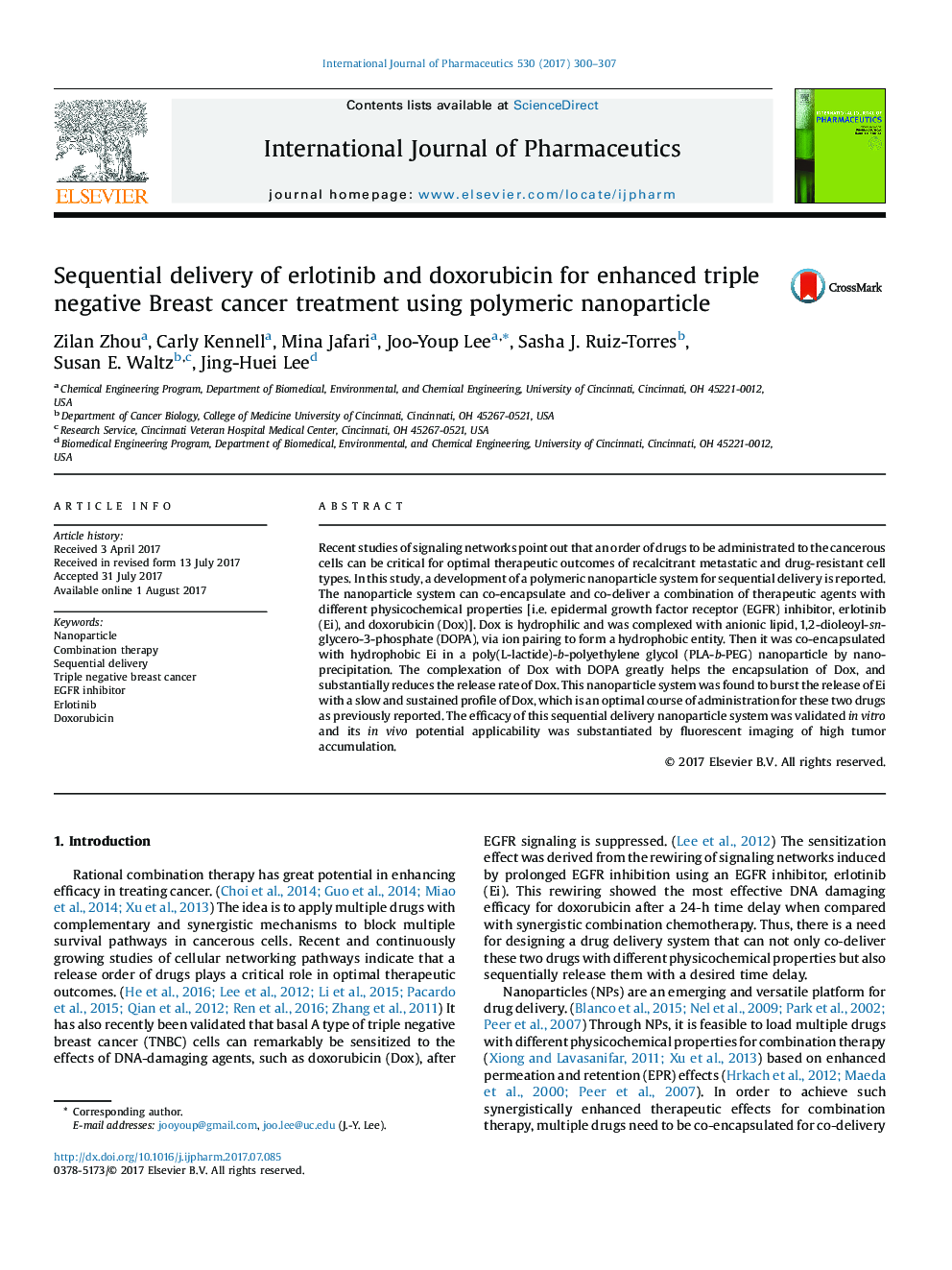| Article ID | Journal | Published Year | Pages | File Type |
|---|---|---|---|---|
| 5550141 | International Journal of Pharmaceutics | 2017 | 8 Pages |
Recent studies of signaling networks point out that an order of drugs to be administrated to the cancerous cells can be critical for optimal therapeutic outcomes of recalcitrant metastatic and drug-resistant cell types. In this study, a development of a polymeric nanoparticle system for sequential delivery is reported. The nanoparticle system can co-encapsulate and co-deliver a combination of therapeutic agents with different physicochemical properties [i.e. epidermal growth factor receptor (EGFR) inhibitor, erlotinib (Ei), and doxorubicin (Dox)]. Dox is hydrophilic and was complexed with anionic lipid, 1,2-dioleoyl-sn-glycero-3-phosphate (DOPA), via ion pairing to form a hydrophobic entity. Then it was co-encapsulated with hydrophobic Ei in a poly(L-lactide)-b-polyethylene glycol (PLA-b-PEG) nanoparticle by nanoprecipitation. The complexation of Dox with DOPA greatly helps the encapsulation of Dox, and substantially reduces the release rate of Dox. This nanoparticle system was found to burst the release of Ei with a slow and sustained profile of Dox, which is an optimal course of administration for these two drugs as previously reported. The efficacy of this sequential delivery nanoparticle system was validated in vitro and its in vivo potential applicability was substantiated by fluorescent imaging of high tumor accumulation.
Graphical abstractDownload high-res image (200KB)Download full-size image
